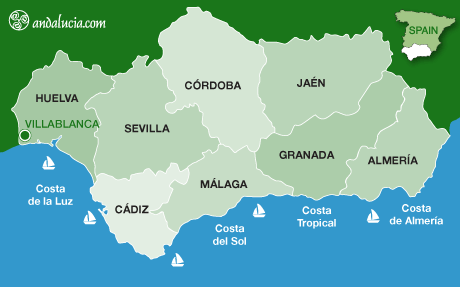villaBlanca
by Saskia Mier
Villablanca has beautiful squares, specifically Plaza de la Constitución, also known as Plaza del Consejo, which is the most popular due to their design to bring all the streets in Villablanca together, designed in the first half of the sixteenth century.
HISTORY
Although the origins of Villablanca date back only to the Modern Age, the first mainland settlers, who entered the south from Africa, took advantage of the natural wealth of these territories to found villages. Those who were nomadic hunters during the Paleolithic had chosen, in the Neolithic Revolution, to reconvert to a sedentary lifestyle and thus become agricultural workers.
The Moors revitalised and improved much of what had been Romanized and the Arabs later in settled in the current Villablanca before the Castilian armies in the Reconquista. Once the Arabs were expelled, the Knights of the Cross, coming from the Kingdoms of Castile and Leon, adapted the area to their needs.
The area was divided among the most prominent participants in the war against Islam. However, the actual foundations were created in the sixteenth century, as well as the name which eventually led to Villablanca.
THINGS TO SEE
Iglesia de San Sebastián
Church dating to the seventeenth century shows a very different style to others ordered for construction by the Marquis of Ayamonte. Located on Plaza de la Constitución.
Molinos Harineros
Molino Antonio Pérez is a flour mill built in the eighteenth century of chalky stone. Located east at the highest part of Villblanca.
Plaza de la Constitución
The main square has a surface area of 800,74m² and was constructed in the sixteenth century.
Hotels in Villablanca
Book Hotels in Villablanca
THINGS TO SEE OUTSIDE THE VILLAGE
Ermita a Nuestra Señora de la Blanca
The Mudejar chapel was built by the Marquis of Ayamonte during the fourteenth century, but has been restored several times after that. Located 1km northeast of Villablanca.
Dolmen de la Tenencia
A small archaeological site located very near to Villablanca and dates to over five millennia ago.
GASTRONOMY
The most typical dishes of Villablanca include caldereta de cordero (lamb stew), chuletas de cerdo (pork chops), carnes de caza (game meat) and bollopico (spiced bread filled with egg). As for sweet treats, a must try coca (sweet pastry), arroz con almendras (almond rice pudding) and dulce de calabaza (pumpkin jam).
FESTIVALS
Romería de la Virgen de la Blanca
Celebrated the third Sunday of May including the traditional dance called Danza de los Palos. Performed only by men, it is an ancient shepherds ritual.
Fiestas Patronales de la Virgen de la Blanca
Celebrated the last few days of August.
Festival Internacional de Danza
Dance festival held in August.
Fiestas de Bollopico
Celebrated on Resurrection Sunday, families get together and eat the traditional bollopico.
Fiestas del Mercado
A market celebrated the third week of July with many food and handicraft products.
LOCATION
Villablanca is located 44km from Huelva. To get there, take the A-497 west leaving Huelva and take exit 5 onto the A-5077. At the roundabout, take the 2nd exit onto the A-492 and straight over the next roundabout, merging onto the A-49 (E-1). Take exit 117 onto HU-4400 and continue until you reach Villablanca.
